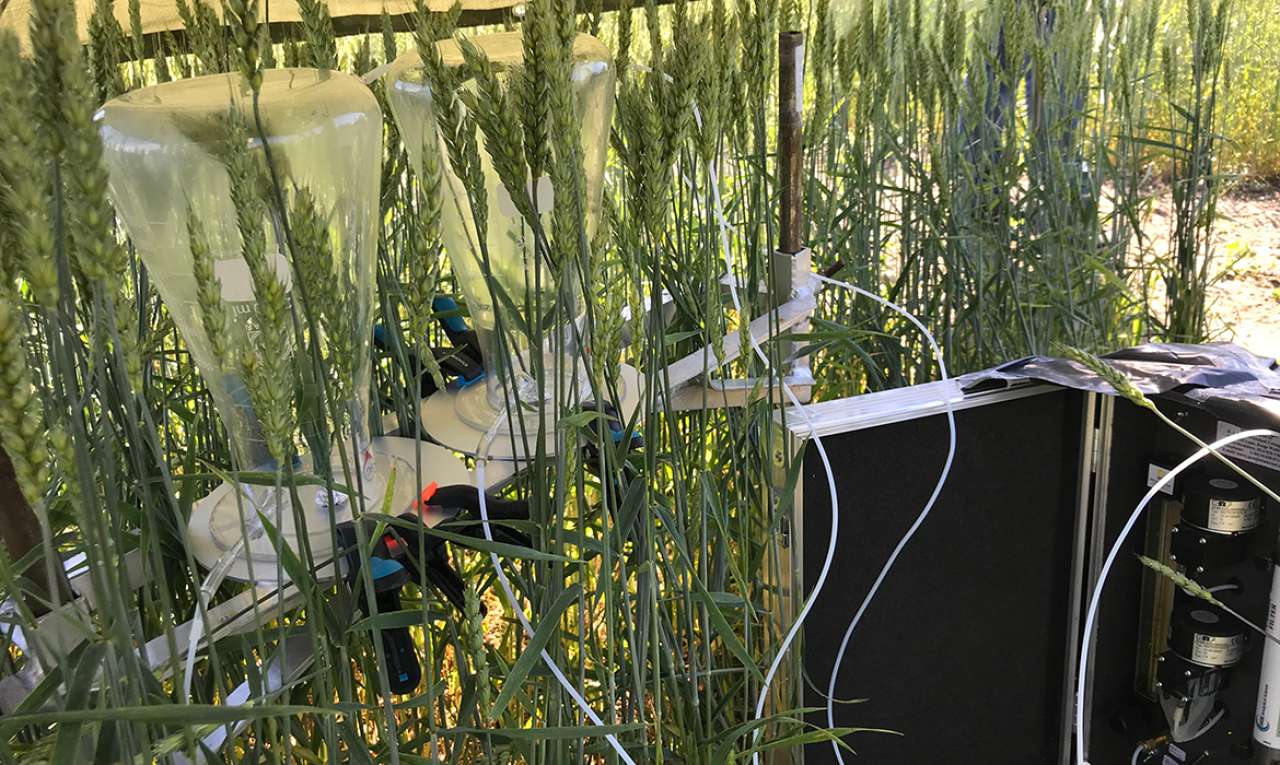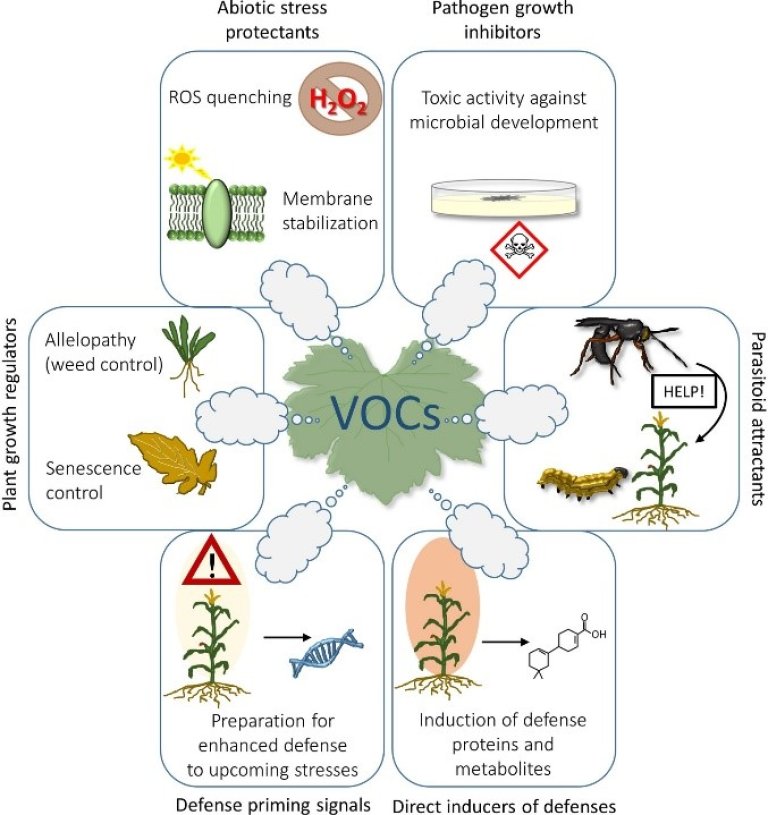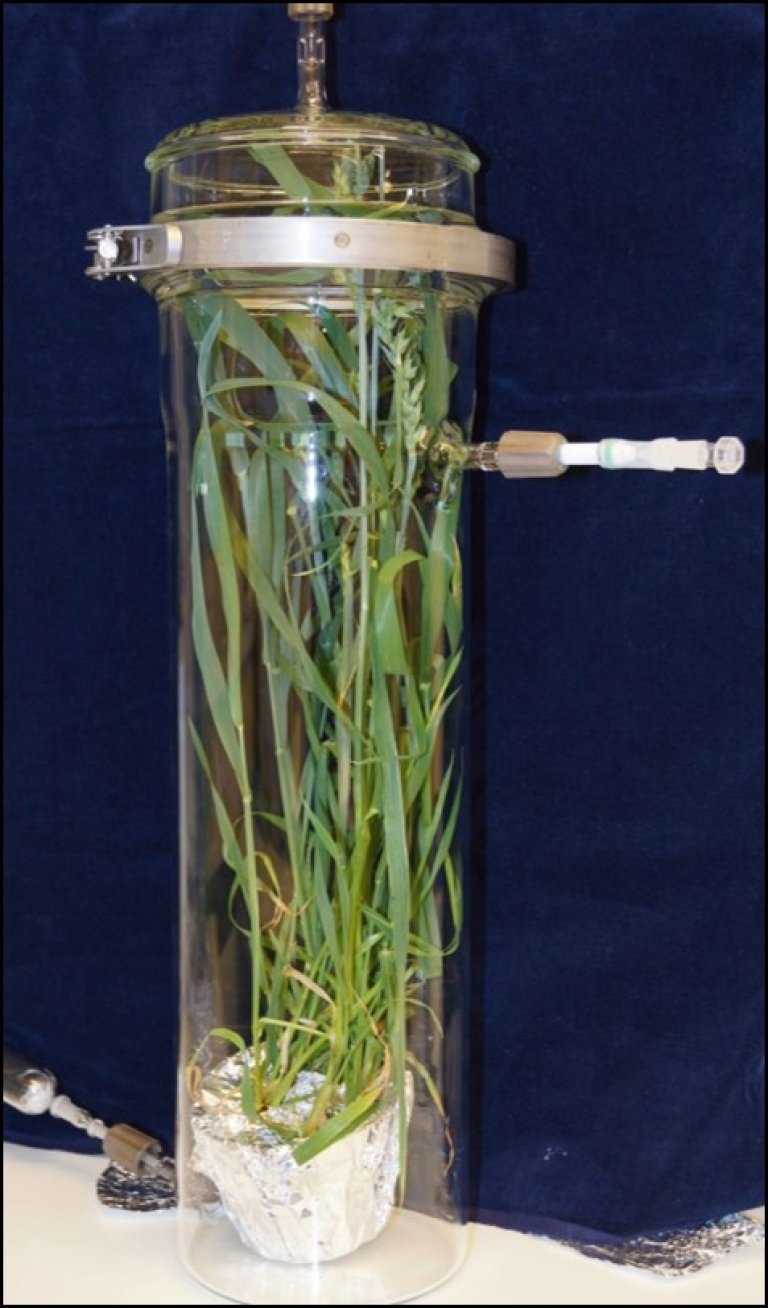Detection of chemical signals from crops attacked by fungal diseases

Photo: Andrea Ficke
Plants react with morphological and chemical changes to attack by fungal pathogens. These changes are usually not noticeable with our human senses before visible symptoms start to develop.
All living organisms produce volatile organic compounds (VOCs). These volatiles can act as chemical communication signals between plants, insects and microorganisms. They can be the starting signal for plants to initiate their antifungal defense mechanisms and activate relevant metabolic pathways.
Some of these volatile compounds can be very common between different species, genera or even kingdoms, such as Octenol, or the Methylsalicylate, which is involved in the systematic acquired resistance (SAR) of plant species to both fungi and bacteria.
Research over the last years shows that production of some volatile signatures or mixtures can be very specific to the plant-insect or plant-microorganism interaction they are elicited from and can vary with different species involved.
Species-specific VOCs can be exploited to detect and identify specific plant diseases in the field, storage and transportation

Contacts


In the project ‘Multisens’ (2011-2014), NIBIO worked with identification of VOCs produced by wheat plants grown in the greenhouse and inoculated with three different diseases; Fusarium head blight (Fusarium sp.), Stagonospora nodorum blotch (Parastagonospora nodorum) and powdery mildew (Blumeria graminis f.sp. tritici). We saw significant differences between plants inoculated with the different pathogens. Concentration of these signature VOCs was also correlated with disease severity increase over time. In general, concentration of the volatiles was very low and it can be difficult to detect VOC concentrations at those low levels with currently used electronic noses or small, easily transportable devices.
However, development of new, highly sensitive and accurate sensors could be used to develop disease detection devices that would be suitable for site-specific fungicide applications in the field. Our international collaborators in sensor technology and data integration are working with us to develop field adapted systems for plant disease detection and protection.
The research on VOCs from wheat plants has been continued to some extend in 2021 and 2022, but under field conditions and with only one variety (Bjarne) and one pathogen (Parastagonospora nodorum). Our capacity to collect VOCs in the field is limited to two sampling devices which can be operated in parallel.
The hypothesis we are testing is that there are species- specific VOC profiles from plants attacked by a specific pathogen, independent of the growth conditions in the field.
Contacts


